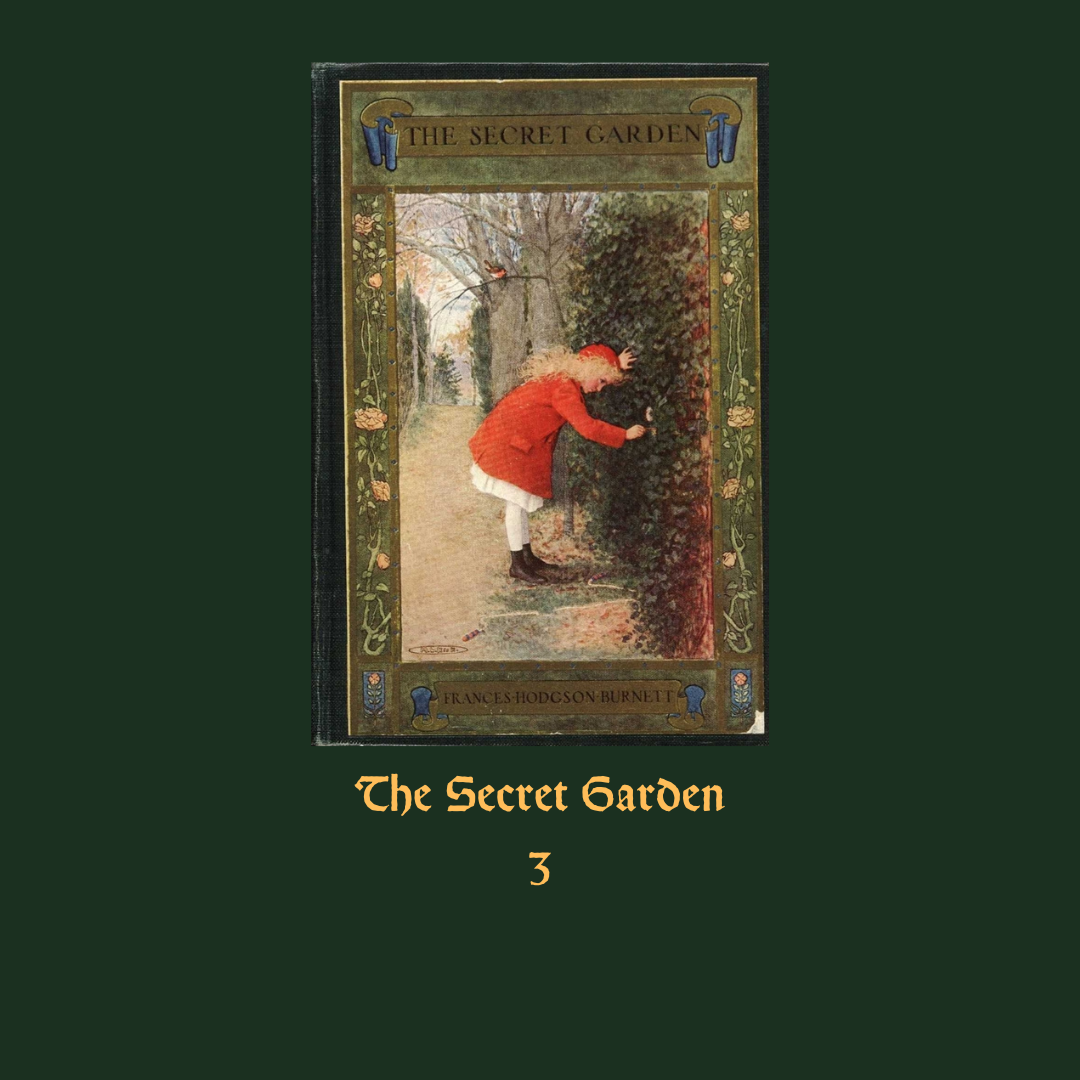CHAPTER III
ACROSS THE MOOR
She slept a long time, and when she awakened Mrs. Medlock had bought a lunchbasket at one of the stations and they had some chicken and cold beef and bread and butter and some hot tea. The rain seemed to be streaming down more heavily than ever and everybody in the station wore wet and glistening waterproofs. The guard lighted the lamps in the carriage, and Mrs. Medlock cheered up very much over her tea and chicken and beef. She ate a great deal and afterward fell asleep herself, and Mary sat and stared at her and watched her fine bonnet slip on one side until she herself fell asleep once more in the corner of the carriage, lulled by the splashing of the rain against the windows. It was quite dark when she awakened again. The train had stopped at a station and Mrs. Medlock was shaking her.
“You have had a sleep!” she said. “It’s time to open your eyes! We’re at Thwaite Station and we’ve got a long drive before us.”
Mary stood up and tried to keep her eyes open [Pg 24]while Mrs. Medlock collected her parcels. The little girl did not offer to help her, because in India native servants always picked up or carried things and it seemed quite proper that other people should wait on one.
The station was a small one and nobody but themselves seemed to be getting out of the train. The station-master spoke to Mrs. Medlock in a rough, good-natured way, pronouncing his words in a queer broad fashion which Mary found out afterward was Yorkshire.
“I see tha’s got back,” he said. “An’ tha’s browt th’ young ‘un with thee.”
“Aye, that’s her,” answered Mrs. Medlock, speaking with a Yorkshire accent herself and jerking her head over her shoulder toward Mary. “How’s thy Missus?”
“Well enow. Th’ carriage is waitin’ outside for thee.”
A brougham stood on the road before the little outside platform. Mary saw that it was a smart carriage and that it was a smart footman who helped her in. His long waterproof coat and the waterproof covering of his hat were shining and dripping with rain as everything was, the burly station-master included.
When he shut the door, mounted the box with the coachman, and they drove off, the little girl [Pg 25]found herself seated in a comfortably cushioned corner, but she was not inclined to go to sleep again. She sat and looked out of the window, curious to see something of the road over which she was being driven to the queer place Mrs. Medlock had spoken of. She was not at all a timid child and she was not exactly frightened, but she felt that there was no knowing what might happen in a house with a hundred rooms nearly all shut up—a house standing on the edge of a moor.
“What is a moor?” she said suddenly to Mrs. Medlock.
“Look out of the window in about ten minutes and you’ll see,” the woman answered. “We’ve got to drive five miles across Missel Moor before we get to the Manor. You won’t see much because it’s a dark night, but you can see something.”
Mary asked no more questions but waited in the darkness of her corner, keeping her eyes on the window. The carriage lamps cast rays of light a little distance ahead of them and she caught glimpses of the things they passed. After they had left the station they had driven through a tiny village and she had seen whitewashed cottages and the lights of a public house. Then they had passed a church and a vicarage and a little shop-window or so in a cottage with toys and [Pg 26]sweets and odd things set out for sale. Then they were on the highroad and she saw hedges and trees. After that there seemed nothing different for a long time—or at least it seemed a long time to her.
At last the horses began to go more slowly, as if they were climbing up-hill, and presently there seemed to be no more hedges and no more trees. She could see nothing, in fact, but a dense darkness on either side. She leaned forward and pressed her face against the window just as the carriage gave a big jolt.
“Eh! We’re on the moor now sure enough,” said Mrs. Medlock.
The carriage lamps shed a yellow light on a rough-looking road which seemed to be cut through bushes and low growing things which ended in the great expanse of dark apparently spread out before and around them. A wind was rising and making a singular, wild, low, rushing sound.
“It’s—it’s not the sea, is it?” said Mary, looking round at her companion.
“No, not it,” answered Mrs. Medlock. “Nor it isn’t fields nor mountains, it’s just miles and miles and miles of wild land that nothing grows on but heather and gorse and broom, and nothing lives on but wild ponies and sheep.”
“I feel as if it might be the sea, if there were [Pg 27]water on it,” said Mary. “It sounds like the sea just now.”
“That’s the wind blowing through the bushes,” Mrs. Medlock said. “It’s a wild, dreary enough place to my mind, though there’s plenty that likes it—particularly when the heather’s in bloom.”
“I don’t like it,” she said to herself. “I don’t like it,” and she pinched her thin lips more tightly together.
The horses were climbing up a hilly piece of road when she first caught sight of a light. Mrs. Medlock saw it as soon as she did and drew a long sigh of relief.
“Eh, I am glad to see that bit o’ light twinkling,” she exclaimed. “It’s the light in the lodge window. We shall get a good cup of tea after a bit, at all events.”
It was “after a bit,” as she said, for when the [Pg 28]carriage passed through the park gates there was still two miles of avenue to drive through and the trees (which nearly met overhead) made it seem as if they were driving through a long dark vault.
They drove out of the vault into a clear space and stopped before an immensely long but low-built house which seemed to ramble round a stone court. At first Mary thought that there were no lights at all in the windows, but as she got out of the carriage she saw that one room in a corner up-stairs showed a dull glow.
The entrance door was a huge one made of massive, curiously shaped panels of oak studded with big iron nails and bound with great iron bars. It opened into an enormous hall, which was so dimly lighted that the faces in the portraits on the walls and the figures in the suits of armor made Mary feel that she did not want to look at them. As she stood on the stone floor she looked a very small, odd little black figure, and she felt as small and lost and odd as she looked.
A neat, thin old man stood near the manservant who opened the door for them.
“You are to take her to her room,” he said in a husky voice. “He doesn’t want to see her. He’s going to London in the morning.”
“Very well, Mr. Pitcher,” Mrs. Medlock an[Pg 29]swered. “So long as I know what’s expected of me, I can manage.”
“What’s expected of you, Mrs. Medlock,” Mr. Pitcher said, “is that you make sure that he’s not disturbed and that he doesn’t see what he doesn’t want to see.”
And then Mary Lennox was led up a broad staircase and down a long corridor and up a short flight of steps and through another corridor and another, until a door opened in a wall and she found herself in a room with a fire in it and a supper on a table.
Mrs. Medlock said unceremoniously:
“Well, here you are! This room and the next are where you’ll live—and you must keep to them. Don’t you forget that!”
It was in this way Mistress Mary arrived at Misselthwaite Manor and she had perhaps never felt quite so contrary in all her life. Burnett
NOTES
“She slept a long time.” And with those words, Burnett suggests the major literary theme in Chapter 3 of The Secret Garden.
Sleep is a time when a person–either deliberately or not–avoids reality. In literature, sleep may be symbolic of darkness, instead of light.
The theme of darkness versus light is one of the most used literary themes of all time.
Batman is a Super Hero who combats the darkness of Gotham City.
If you subscribe to the teaching of the Bible, you might recall that the struggle toward the light is evident in the first chapter of the Bible. Initially, the world was dark—
But immediately, before He created anything else, God created Light!
Later, God created Night and Day, but initially and most importantly, he created the Light.
If you are suspicious of words in the Bible, it might be of interest for you to know that the Ancient Greeks believed that the world came into being in about the same way: Light was also of importance in that story:
How Does the Biblical Story of Creation in Genesis Compare to that of the Ancient Greeks?
Darkness versus Light is a theme in much of literature–even in children’s literature:
Most people experience dark days in their own lives, and sleep is one way to avoid that darkness. And with that thought, Chapter 3 of The Secret Garden Begins:
She slept a long time,” Burnett, pg. 23
“You won’t see much because it’s a dark night, but you can see something.” Burnett, pg. 25
Rain, Water as Themes in the Secret Garden
Water, Rivers, and Oceans Are Other Themes in Literature.
Rivers are a Means of Passage
Lyrics Cerrickfergus
Rivers are major themes in literature. In some literature, rivers are pathways to freedom.

In The Adventures of Huckleberry Finn, The Mississippi River is symbolic of freedom in two ways.
- By traveling UP the Missippi River–to the North–the enslaved Jim is traveling toward an end to his enslavement.
- As Huck rides along the river, he is seeking freedom from his brutal father.
Paul Robeson painted the freedom of the Mississippi River in the song Ol’ Man River–in the movie Showboat.
In other literature, rivers represent the flow of life itself.
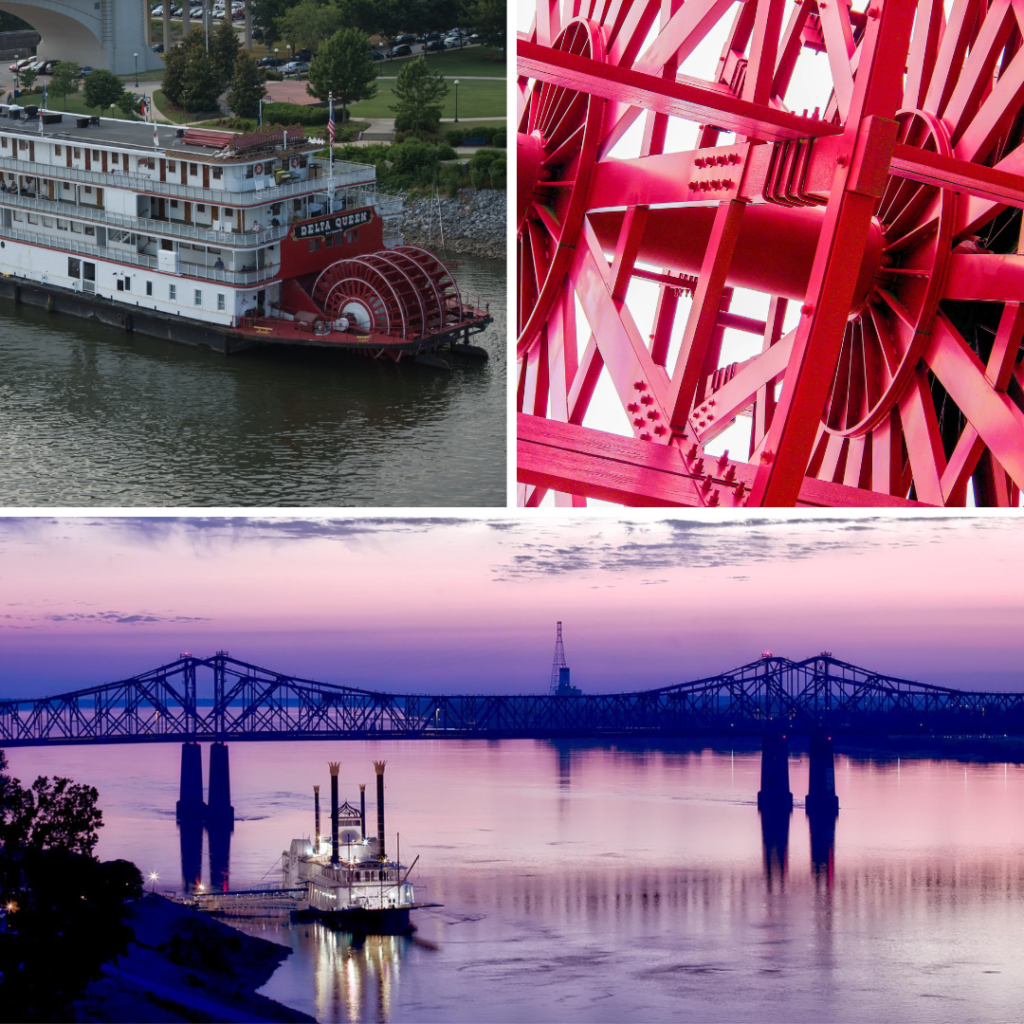
In the following song, Proud Mary is a Riverboat, and the Big Wheels are the paddle wheels that propel the boat up or down the river.
In Chapter 3 of the Secret Garden, Mary Lennox is crossing through a sea of darkness, and fortunately there is a bridge over which she might pass.
Sometimes. a Waterway is the path of a Hero’s Journey
“On and on they drove through the darkness, and though the rain stopped, the wind rushed by and whistled and made strange sounds. The road went up and down, and several times the carriage passed over a little bridge beneath which water rushed very fast with a great deal of noise. Mary felt as if the drive would never come to an end and that the wide, bleak moor was a wide expanse of black ocean through which she was passing on a strip of dry land.” Burnett, pg 26
More References to Rivers & Bridges in Literature:
“TWENTY bridges from Tower to Kew –
Wanted to know what the River knew,
Twenty Bridges or twenty-two,
For they were young, and the Thames was old
And this is the tale that River told:”
― Rudyard Kipling“On and on they flew, over the countryside parceled out in patches of green and brown, over roads and rivers winding through the landscapes like strips of matte and glossy ribbon.”
― J.K. Rowling, Harry Potter and the Deathly Hallows“Eventually, all things merge into one, and a river runs through it. The river was cut by the world’s great flood and runs over rocks from the basement of time. On some of the rocks are timeless raindrops. Under the rocks are the words, and some of the words are theirs.”
― Norman Maclean, A River Runs Through it and Other Stories“Have you also learned that secret from the river; that there is no such thing as time?” That the river is everywhere at the same time, at the source and at the mouth, at the waterfall, at the ferry, at the current, in the ocean and in the mountains, everywhere and that the present only exists for it, not the shadow of the past nor the shadow of the future.”
― Hermann Hesse, Siddhartha
As she passes through the ocean-like or river-like moor, Mary’s healing process has begun
CROSSING THE MOOR
“The carriage lamps shed a yellow light on a rough-looking road which seemed to be cut through bushes and low growing things which ended in the great expanse of dark apparently spread out before and around them. A wind was rising and making a singular, wild, low, rushing sound.”
The Moor in The Secret Garden and Maurice Sendak’s The Wild Things.
Many time, I have seen evidence that writers are influenced by other writers before them. In chapter 3 of The Secret Garden, I found lines that were almost echoed many years later by Maurice Sendak.
“It’s—it’s not the sea, is it?” said Mary, looking round at her companion.
“No, not it,” answered Mrs. Medlock. “Nor it isn’t fields nor mountains, it’s just miles and miles and miles of wild land that nothing grows on but heather and gorse and broom, and nothing lives on but wild ponies and sheep.” Burnett, pg. 26

“That very night in Max’s room a forest grew
and grew –
and grew
and grew until his ceiling hung with vines and the walls became the world all aroundand an ocean tumbled by with a private boat for Max
and he sailed off through night and dayand in and out of weeks
and almost over a year
to where the wild things are,” – Where the Wild Things Are
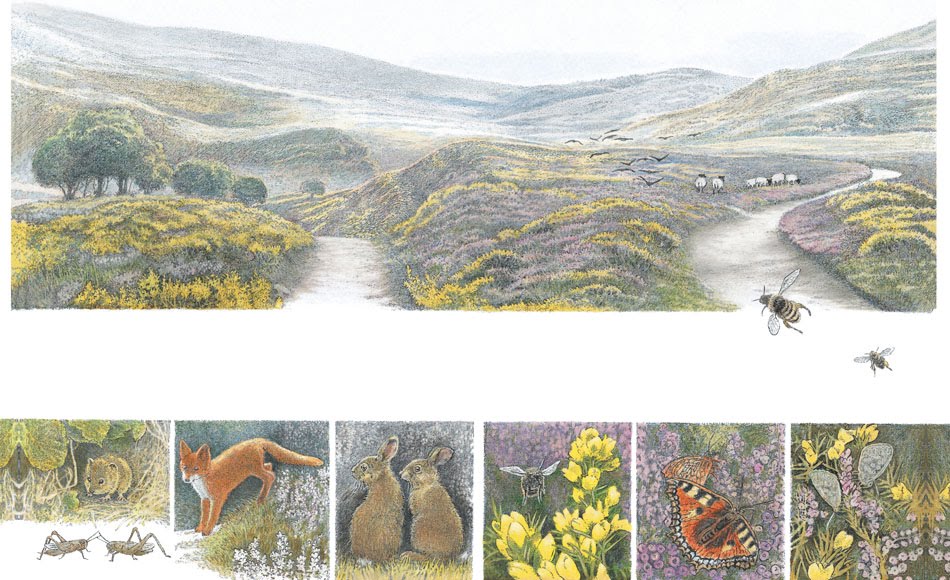
“It’s—it’s not the sea, is it?” said Mary, looking round at her companion.
“No, not it,” answered Mrs. Medlock. “Nor it isn’t fields nor mountains, it’s just miles and miles and miles of wild land that nothing grows on but heather and gorse and broom, and nothing lives on but wild ponies and sheep.”
Ultimately, Max leaves the land of the wild things.
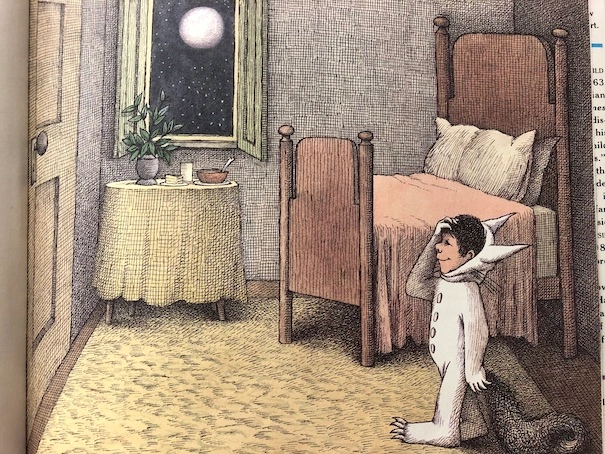
Max is forced to sail back across that waterway — and when he gets home, he discovers his supper is waiting for him.
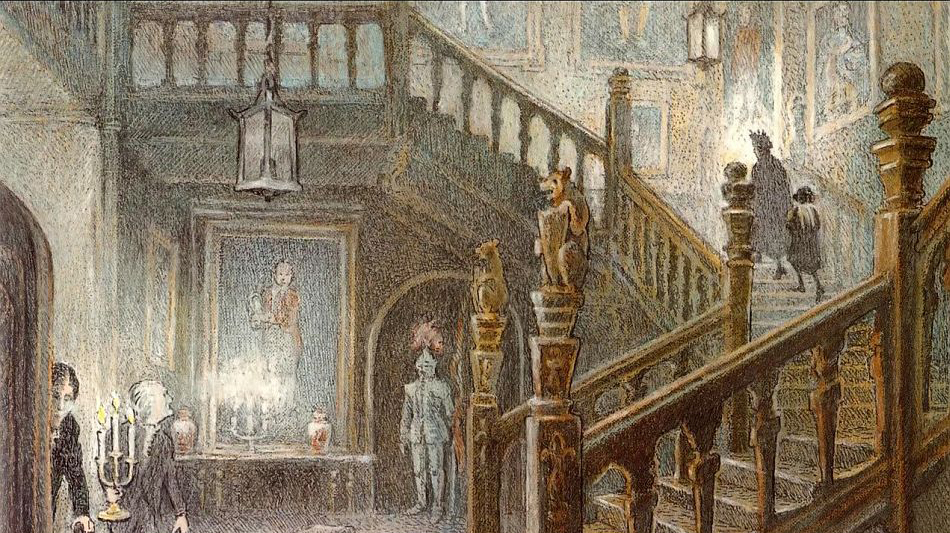
Those words were suggested before Sendak by Burnett:
“And then Mary Lennox was led up a broad staircase and down a long corridor and up a short flight of steps and through another corridor and another, until a door opened in a wall and she found herself in a room with a fire in it and a supper on a table.” Burnett, pg. 30
More about Mary’s Passage through the Moor
“On and on they drove through the darkness, and though the rain stopped, the wind rushed by and whistled and made strange sounds. The road went up and down, and several times the carriage passed over a little bridge beneath which water rushed very fast with a great deal of noise. Mary felt as if the drive would never come to an end and that the wide, bleak moor was a wide expanse of black ocean through which she was passing on a strip of dry land.” Burnett, pg 26
This journey through the Moor and into the light is a type of Hero’s Journey.
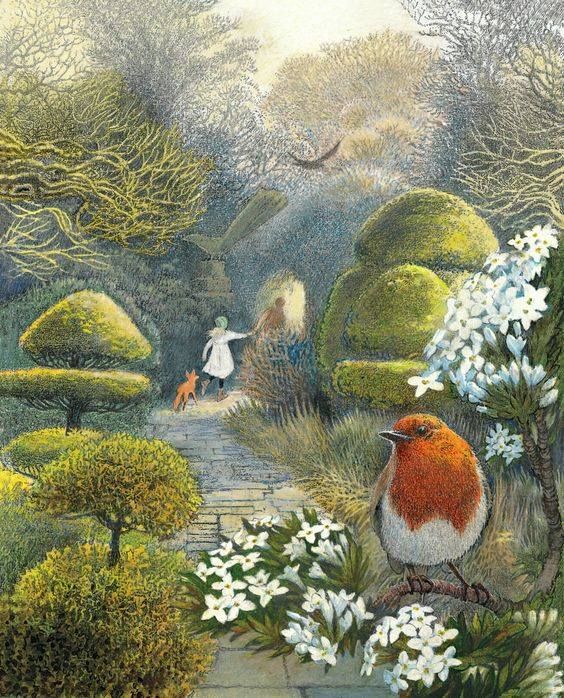
I have altered the reading list for the Free Online Looking at Lit Club. Almost every title I have chosen is exemplary of A Hero’s Journey–especially the following titles:
The Secret Garden
Tuck Everlasting
Wind in the Willows
The Donkey’s Song
The Christmas Carol
The Lion, the Witch, and the Wardrobe [Chronicles of Narnia]
The Wonderful Wizzard of Oz
Charlotte’s Web
Books that Are Not in Some Way about the Hero’s Journey Were Chosen for Other Reasons
Complete List of Book Selections for the Looking at Lit Club
June 2024 – The Secret Garden
July 2024 – Peter Pan in Kensington Gardens
August 2024 – Tuck Everlasting
September 2024 – Wind in the Willows
October 2024 – The Legend of Sleepy Hollow
November 2024 – Aesop’s Fables D
ecember 2024 – The Donkey’s Song
December 2024 – The Christmas Carol
January 2025 – The Lion, the Witch, and the Wardrobe
February 2025 – The Wonderful Wizard of Oz
March 2025 – Charlott’es Web
April 2025 – The Velvetleen Rabbit
May 2025 – Winnie the Pooh
Each month, I’ll feature one main book, but also during each month, I’ll share other pieces which I believe relate to that month’s selection.
During the month of June, I’ll share:
The Secret Garden + the Following
:Wolves in the Wall – Neil Gaiman
Darkness Slipped In -Ella Burfoot
Where the Wild Things are – Maurice Sendak
Little Red Riing Hood – illustrated by Trina Schart Hyman
Little Redcap – illustrated by Lisbeth Zwerger
Snow White – illustrated by Trina Schart Hyman
Snow White – illustrated by TCharles Santore
Town by the Sea – Joanne Schwarz – Illustrated by Sydney Smith
The Owl and the Pussycat – Edward Lear – Illustrated by Jan Brett
The Owl and the Pussycat – Edward Lear – Illustrated by Jan Michael Hague
The Mending Wall – Robert Frost
Leave Me Alone – Vera Brosgol
During the month of July, I’ll share:
Peter Pan in Kensington Garden + the Following
The Fairy Book by Arthur Rackham
The Book of Fairies by Michael Hague
Flower Fairies by Mary Cicely Barker
How to Draw and Paint Fairies
How to Draw and Paint Fairyland
Many of the booka have a clear link to Romanticisim, and most were written within 100 ears of each other. In m yopinion, there is some common thread that links almost all of these books.
Almost every book on the list can be read free at Project Gutenberg, but I have illustrated copies of most of them.
Many of these books have been illustrated by Arthur Rackham–one of my favorite illustrators. He illustrated during the time period previously specified.
Several of these books were also illustrated by Charles Santore.
Almost every book I have selected echoes many of the themes that are commonly used by writerss:
One of those threads is Nature and/or Gardens
The Romanticists believed in the healing power and/the spirituality of nature.
William Wordsworth wrote I Wandered Lonely as a Cloud, also known as Daffodils, in 1804. The poem was inspired by an encounter Wordsworth had with a field of daffodils in the English countryside on April 15, 1802, while walking with his sister Dorothy. Wordsworth’s sister later wrote about the experience in her journal, which may have inspired him to write the poem.
At least 100 years later, Tolkien felt an affinity with nature. He was one of the greatest writers about the Hero’s Journey:
Undoubtedly, Tolkien’s writing is undiluted magic. He invented his own language. He had a reverence for sounds that simply seemed, and he spun those sounds into strands of gold:
The ancient Celts believe that the birds have a special language. Tolkien’s writing was steeped in Celtic Mythology. Like that of the birds, Tolkien heard a language that simply seemed.
I challenge every human being to watch the movie Tolkien. I double-challenge ever writer to do the same.Tolkien is a movie about language, about devotion, and mostly about following one’s dream.
Following a dream is a Quest. Even though it is the Road Less Traveled, it is a Hero’s Journey. Dare to Dream. Dare to Deviae. Embark:
Discover more from Jacki Kellum
Subscribe to get the latest posts sent to your email.
